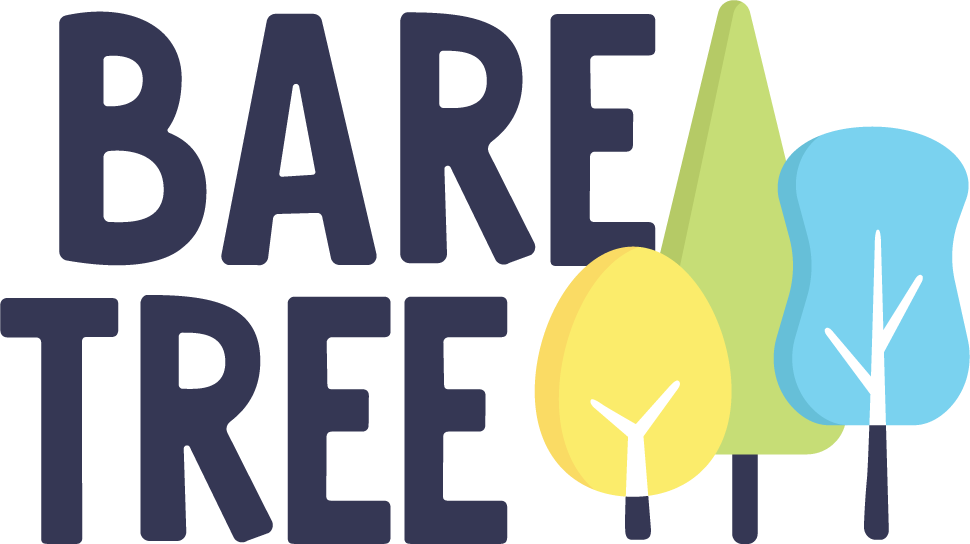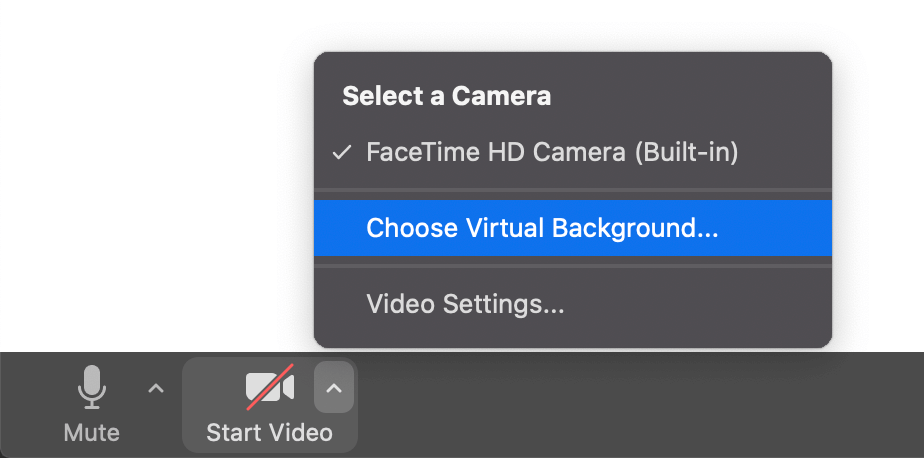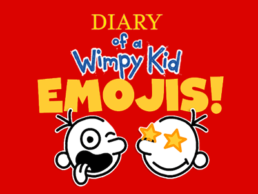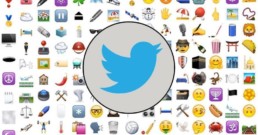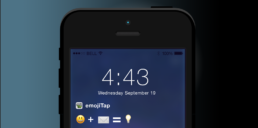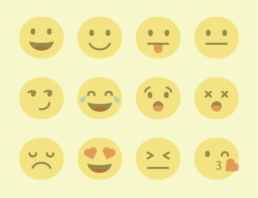How to Bring Some Fun to Your Video Calls

How to Bring Some Fun to Your Video Calls
As we adjust to a new normal, video conference calls have become the number one way to get some quality face time with co-workers, clients and loved ones. If you’ve been like us, you’ve been spending a majority of the time in these calls and want to break up the monotony with a bit fun! Using Snapchat’s desktop app Snap Camera or simple videos, you can add exciting backgrounds and AR effects to your video feed.
How to Add Videos to Zoom
Adding fun videos to Zoom calls is super easy! Once you are in a Zoom Meeting, in the bottom left corner of the window, you will see a ‘Start Video’ button. Click on the up arrow to the right of the icon and select ‘Choose Virtual Background..’
This will bring you to your video settings within Zoom. You will see five default videos from Zoom that you can try out. But if you want something special hit that plus button to the right and choose ‘Add Video’. A finder window will open up where you can navigate to any mp4 video file you have on your computer.
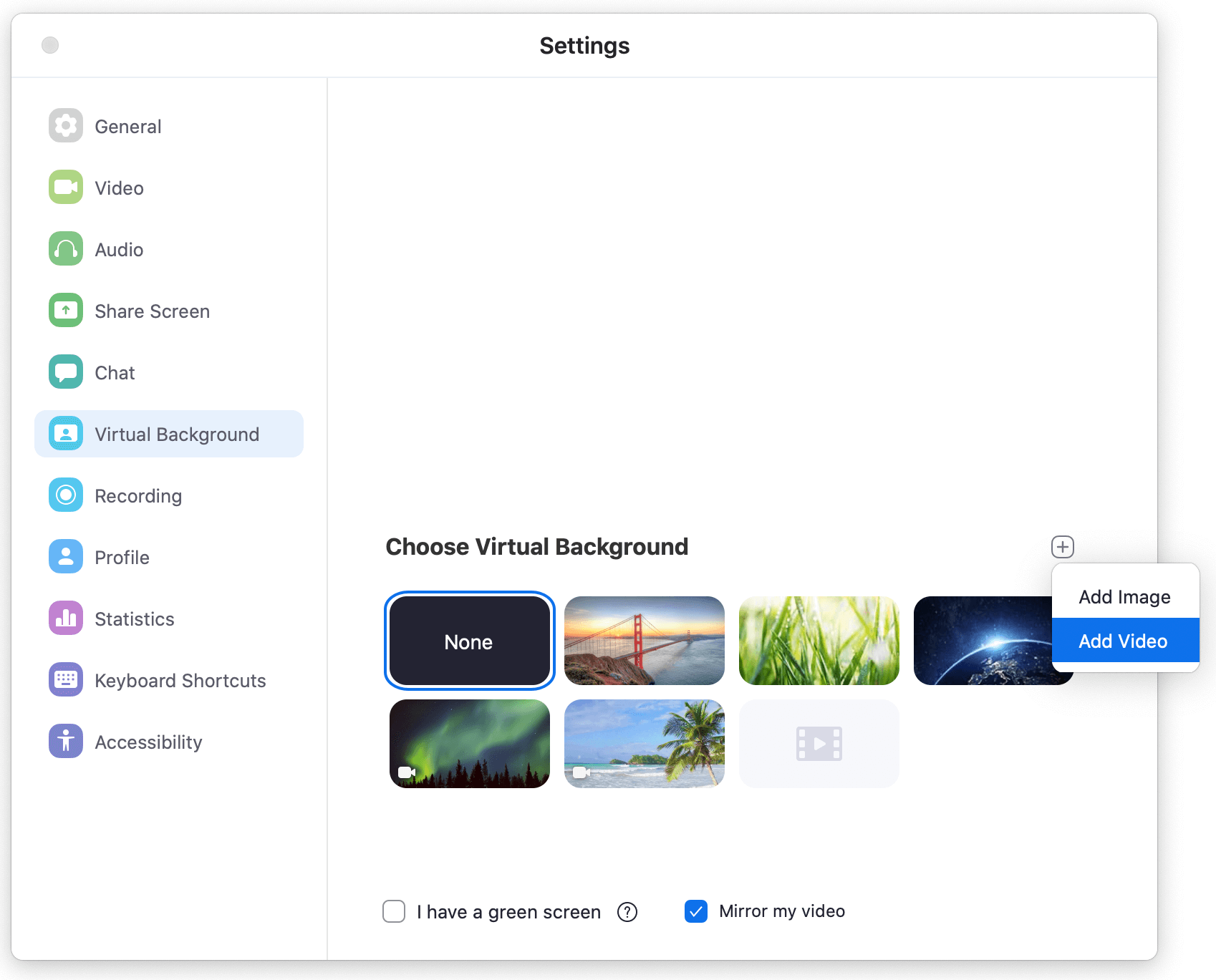
And that’s it! You should now have a fun video playing in the background!
If you’d like to use our enchanted forest video background you can download it right below by hitting the download button. Then right click on the video, hit ‘Save Video As’ and choose where you would like to save the video onto your computer.
How to Use AR Effects
If you’d like to get a little fancier, you can use Snap Camera to add a wide variety of AR effects to some of the most popular video call apps including Google Hangouts, Skype, Twitch and more! Unfortunately Snap Camera doesn’t currently work on Zoom with the latest macOS (though they are working to fix this!) but if you are on a Windows computer you can follow the instructions below for Zoom as well.
First, Install Snap Camera
You can download Snap Camera to your computer here. Once it downloads, double click and follow the instructions to install the application. Snap Camera will automatically open and show a wide range of suggested lenses. Click on any effect to try it out!
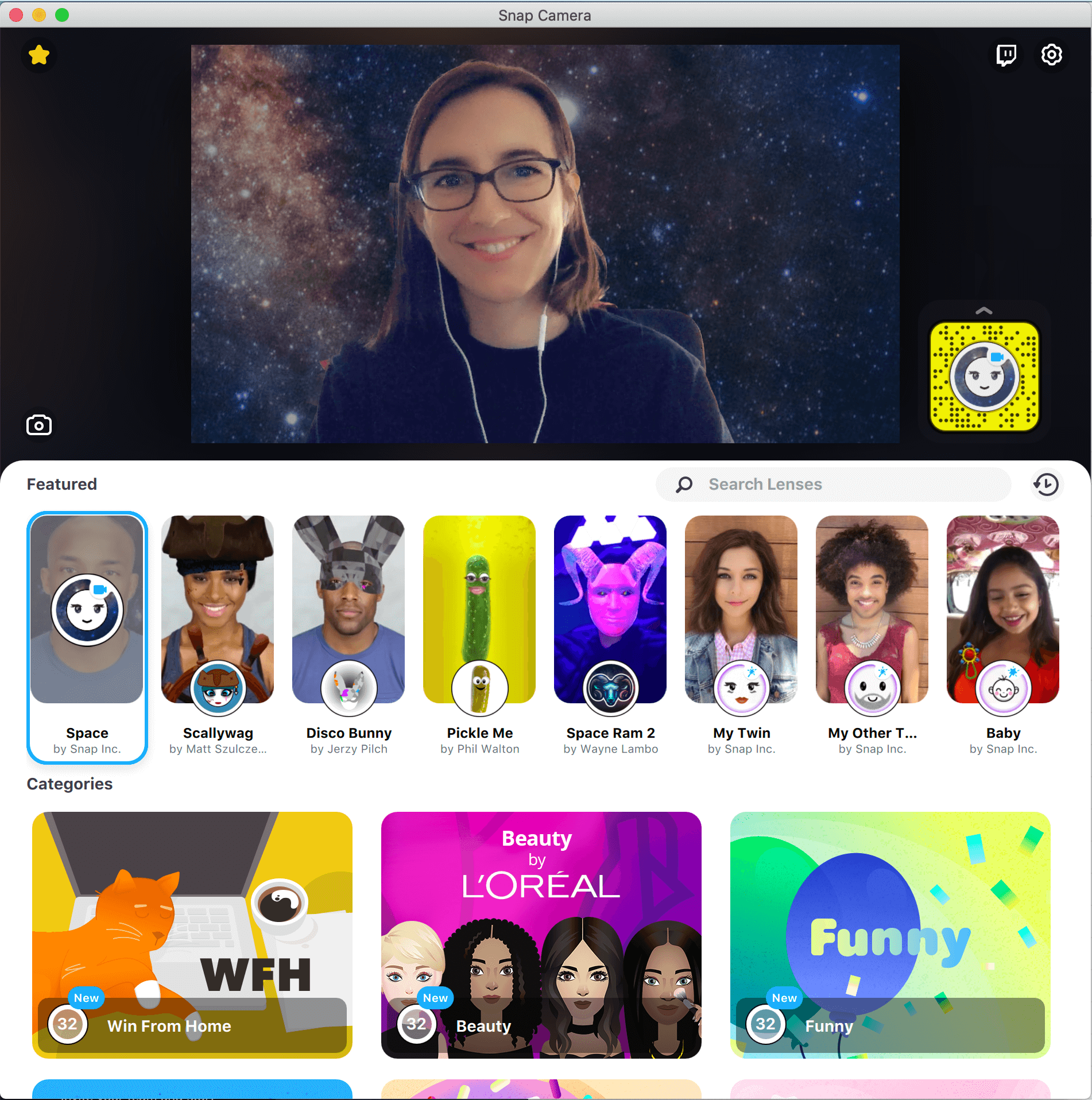
Next, Update your Video Settings in your Video Call App
Once you have Snap Camera setup, open up your video call app of choice and go to the video settings. There you should see a dropdown to select which webcam you would like to use and select ‘Snap Camera’. If you don’t see ‘Snap Camera’ listed you may need to restart both applications or your computer for Snap Camera to appear on the list of options.
Lastly, choose an AR Effect and have fun!
After Snap Camera is selected as the video source, you can pick any AR effect you would like within Snap Camera and it will update in your video call. Try out our enchanted forest effect by searching ‘Enchanted Forest’ or search ‘Bare Tree Media’ to see all of our Snapchat effects!
Interested in having your own custom AR effect or video background created?
Reach out to our team!
Bare Tree Media is a full-service creative studio with a dash of technology and a whole lot of fun! Our mission is to help your brand stand out visually and engage your audience through creative and interactive content. Although we specialize in the creation and digital publishing of branded emojis, messaging stickers, GIFs and augmented reality, our talented artists and animators can create just about anything for your marketing needs.
#StickingTogether in the Face of COVID-19
Tough times are upon us. Here at Bare Tree, we are closely monitoring the situation that is developing around the world. We hope everyone is staying healthy, safe and socially distanced. Our team of artists and developers is working remotely continuing to make engaging stickers and augmented reality effects that will hopefully bring some brightness to people’s lives.
As events are cancelled and people are using social distancing to combat COVID-19 continues, many businesses are feeling the strain. Among them are indie artists, many of whom rely on sales at conventions to make their living. Being illustrators, animators and designers ourselves, we want to salve some of the hurt our community is currently experiencing due to cancelled conventions, commissions and projects. Because of this we are opening up our services and expertise to any artists interested in selling their art as stickers for the next 90 days.
Our team will work with the artists to determine what work of theirs would be best as messaging stickers or give tips on best practices for stickers if they choose to create something new. Once the stickers are complete, we will publish them for sale on popular messaging apps like iMessage and Google Play. All ownership of the work will, of course, remain with the artist. The artist will also receive 100% of the proceeds.
We will soon be publishing a separate blog post that will be continuously updated with links to the newly released indie artist stickers, so look out for it and keep checking back. Together, we can support each other and make it through this!
If you are an artist and interested in taking part, please email info@baretreemedia.com with the subject line '#StickingTogether'
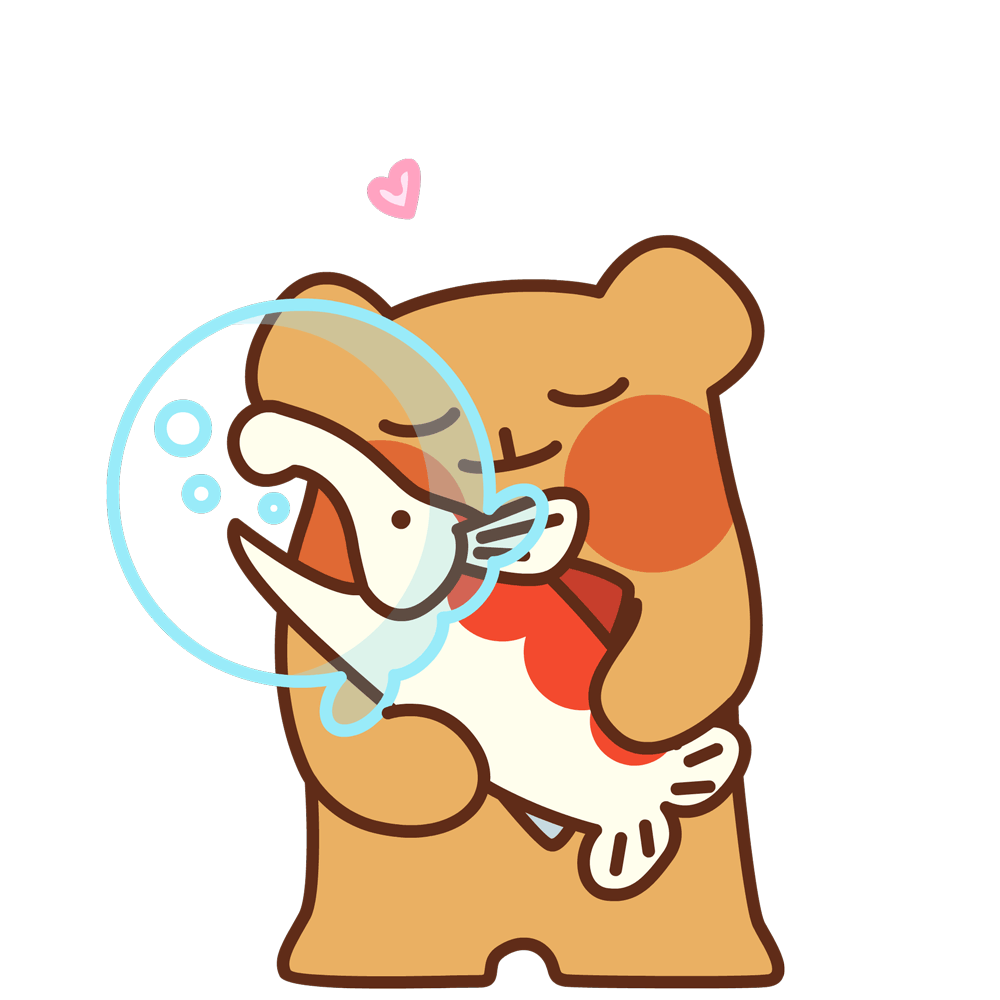
Sending hugs from Tod and Sal, a sticker duo created by former BTM Sprout, Amy!
Wimpy Kid, Inc Expands Digital Engagement with Augmented Reality and Sticker Keyboards
Boston, MA – January 24, 2020 – Fellow Massachusetts-based companies Wimpy Kid, Inc. and Bare Tree Media Inc., expanded their digital partnership with the introduction of augmented reality social media effects and a global expansion of their stickers within keyboard mobile applications.
To kick off 2020, Bare Tree Media designed and released three augmented reality effects themed around the latest installment in the popular middle-grade series, Diary of a Wimpy Kid 14: Wrecking Ball. The AR effects offer users the ability to insert a swinging virtual wrecking ball into their camera scene and then wreck, record, and share a real world scene of their choice. The AR filters are available to engage Wimpy Kid fans on popular messaging platforms, Facebook and Instagram, and as an AR lens on Snapchat.
Bare Tree Media also expanded their Wimpy Kid-branded digital presence to include digital stickers released within Baidu’s keyboard apps worldwide, including Facemoji Keyboard in the United States, Simeji in Japan, and Baidu IME in China.
‘Augmented reality is a great marketing platform for brands to engage audiences, and a perfect fit for the Wimpy Kid fanbase to create and share their special moments with a wrecking ball,” said Bob Ferrari, CEO of Bare Tree Media. “We are also very excited to expand sticker distribution through Baidu in key markets around the world.”
“We are delighted to be kicking off 2020 by launching these stickers with Bare Tree Media and Wimpy Kid, Inc.,” said Josh Fenn, Senior Marketing Manager at Baidu. “Now, our keyboard app users around the world can all enjoy Wimpy Kid’s uniquely charming brand of humor when they chat with their friends online.”
“I’ve loved seeing fans around the globe engage with the Wimpy Kid brand using our existing emoji-style stickers. This year, we wanted to expand the Wimpy Kid universe and I’m thrilled to have the brand-new augmented reality and sticker formats on major global platforms. I’m really looking forward to seeing where Greg can go with his fans in 2020!” said Jeff Kinney, author of the Diary of a Wimpy Kid series.
About Bare Tree Media
Bare Tree Media enables brands to reach, engage and entertain consumers through the creation and digital publishing of branded emojis, messaging stickers, GIFs and augmented reality. As a pioneer in the digital creative and technology sector, Bare Tree Media has worked with many brands including: 20th Century Fox, ABC Television, American Greetings, Baidu, CBS Interactive, Disney, Duracell, Facebook, Giphy, Instagram, King Features, Life is Good, Lionsgate, Mars-Wrigley, MuscleTech, Paws Inc, P&G, NBC Universal, New England Patriots, Snapchat, Snap-On Tools, SONY Television Pictures, Twitter, Warner Bros, Wimpy Kid, and many more. Brands interested in offering their own mobile messaging apps, stickers and augmented reality can go to www.baretreemedia.com or contact Bare Tree Media at info@baretreemedia.com.
About Baidu’s Global Business Unit
Baidu’s Global Business Unit (GBU) is focused on bridging the gap between Eastern and Western markets with its consumer and business-focused internet products and services. Baidu GBU’s product portfolio features keyboard apps Simeji and Facemoji Keyboard, content recommendation platform popIn, and ad platform MediaGo, which serves Chinese advertisers looking to reach consumers overseas. Baidu GBU offers its products and services worldwide, including in the United States, Greater China, Japan, Singapore and South Korea. For more information, please contact us at: gbu_us@baidu.com
About Diary of a Wimpy Kid
The fourteenth installment in the series, Diary of a Wimpy Kid: Wrecking Ball, was published on November 5, 2019, and immediately hit #1 on the USA Today, Wall Street Journal, and New York Times bestseller lists.
2019 marked the first publication of a spin-off book, Diary of an Awesome Friendly Kid, which was published in April 2019 and also immediately reached #1 on all three national bestseller lists (New York Times, USA Today, and Wall Street Journal). ABRAMS also recently released Diary of a Wimpy Kid: Best Friends Box, a box set containing Diary of a Wimpy Kid #1 and Diary of an Awesome Friendly Kid, and The Wimpy Kid 2020 Wall Calendar.
The series continues to reach new heights globally. This fall, Kinney visited seven countries on his international tour, including France, where he was made an officer of the Order of Arts and Letters, one of the country’s highest cultural honors. Both Diary of a Wimpy Kid: Wrecking Ball and Diary of an Awesome Friendly Kid ranked #1 in every country in which they were published, including in the United Kingdom, Spain, Australia, New Zealand, Brazil, and Germany. The series is now published in 64 languages and 76 editions.
More than 200 million copies of the books in the Diary of a Wimpy Kid series have been sold globally. Published in 2007, the first book was an instant bestseller and has remained on the New York Times bestseller list since its publication and through the release of the fourteenth book, for more than 686 weeks total.
About the Author
Jeff Kinney is a #1 New York Times bestselling author and a six-time Nickelodeon Kids’ Choice Award winner for Favorite Book for his Diary of a Wimpy Kid series. Jeff has been named one of Time’s 100 Most Influential People in the World. He is also the creator of Poptropica, which was named one of Time’s 50 Best Websites. He spent his childhood in the Washington, D.C., area and moved to New England in 1995. Jeff lives with his wife and two sons in Massachusetts, where they own a bookstore, An Unlikely Story. For more about Wimpy Kid visit wimpykid.com.
Twitter Emoji Campaigns: A Primer
What is a Twitter Emoji Campaign?
Twitter emoji campaigns are a visually smart way to separate your hashtag from other hashtags. As the name may imply, they aren’t permanent additions to a brand’s main hashtag, but rather are centered around a specific campaign that the brand is putting out.
For a price tag of $1M, Twitter will—for 90 days—attach a picture that you provide to a hashtag of your choice (given it doesn’t infringe on anyone else’s IP, of course).
On-the-nose advertisers may remember the tremendously successful #shareacoke campaign, one of the earliest campaigns to combine an emoji with a hashtag. The campaign created waves that led to the immediate introduction of other emoji/hashtag combinations.
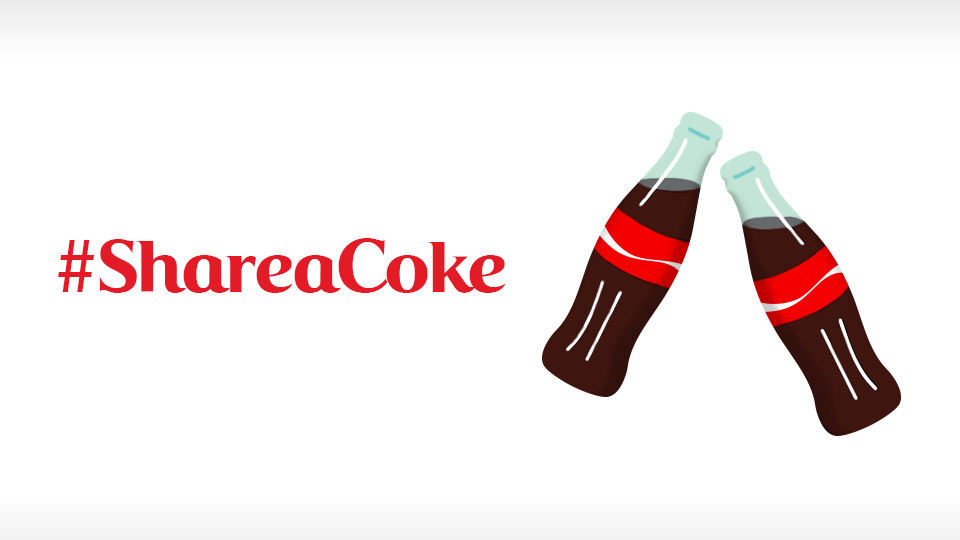
The hashtag that launched a thousand twitter emojis
But how worth it really is it invest in a Twitter emoji campaign? Since the #shareacoke campaign debuted in 2015, the number of hashtag/emoji campaigns has skyrocketed up; what value do these little emojis hold that are making them mass hits?
The benefits are threefold:
Create Campaign Hype
Having a visual next to your hashtag will instantly create an association in people’s mind, and creates hype around the campaign. It separates your hashtag from other hashtags that may be similar, and even after the campaign ends, people will be left with the imprint reminder of your campaign. Additionally, it allows the user to create an emotional bond to the campaign that a text-only hashtag simply would not be able to achieve. The reason emojis are so popular is that people connect to them emotionally. Is your campaign cool? Funky? Nostalgic? Whimsical? The Twitter emoji’s art style paired with your hashtag will help determine this and will shape how people perceive the campaign overall. Yea, it’s that important.
Promotes Interaction Around the Campaign
A hashtag creates a quick avenue for a community to be built around the hashtag, and in turn around your campaign. Once again, the visual element greatly helps people quickly recognize the hashtag, so they’ll be able to click on it and begin to interact with others who are also using that hashtag. This creates a feedback loop where those who are interacting with each other build on the conversation and continue to use the hashtag, keeping it active for others to see in their timelines and become interested in!
It Improves the ‘stopping power' of your Tweet
Twitter users cumulatively generate millions of tweets a day, so the average user is scrolling quickly down an array of hashtags. Internally, Twitter refers to tweets and hashtags that hold people’s attention and pause them in their action of scrolling ‘stopping power’—essentially, it’s a level of retention that determines how effective a campaign is going to be in a user’s mind.
Twitter found that the stopping power of tweets with emojis increased by 10%, and if those tweets were promoted, that figure jumped up to 6x their previous impressions.
Case Study: Christopher Robin
For the release of their new movie Christopher Robin, Disney asked BTM to help them with their Twitter campaign, and we were more than happy to oblige! Christopher Robin was a movie steeped in nostalgia, so we definitely wanted to play up that angle and create emojis that felt timeless and resonated emotionally with the user. They actually had five hashtags, one for each of the ‘major” characters in the movie as well as one for the movie title:

Lovingly rendered above are #Pooh, #ItsPiglet, #Eeyore, and #Tigger! All for Disney's #ChristopherRobin!
This was one of our first Twitter emoji campaigns, as well, so we were very excited and curious to see how it would fare. The thought was that users would have an emotional reaction to the characters’ faces and thus use the hashtags because of it.
Once the hashtags were live, we monitored the hashtags to see how they were doing. Sure enough, almost immediately we began seeing tweets that reflected nostalgia beyond what we even expected. Some users were tweeting specifically for seeing the hashtag characters!

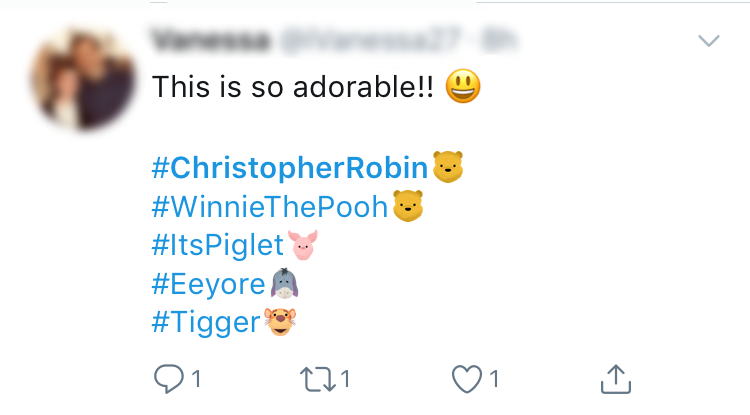
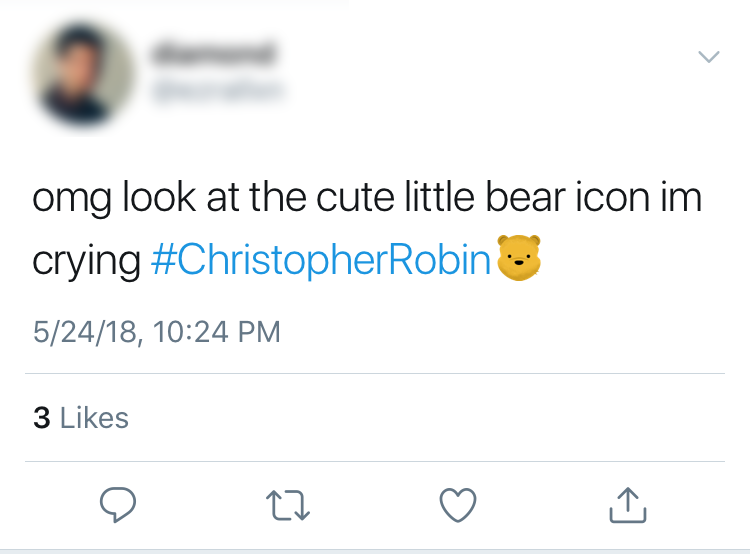
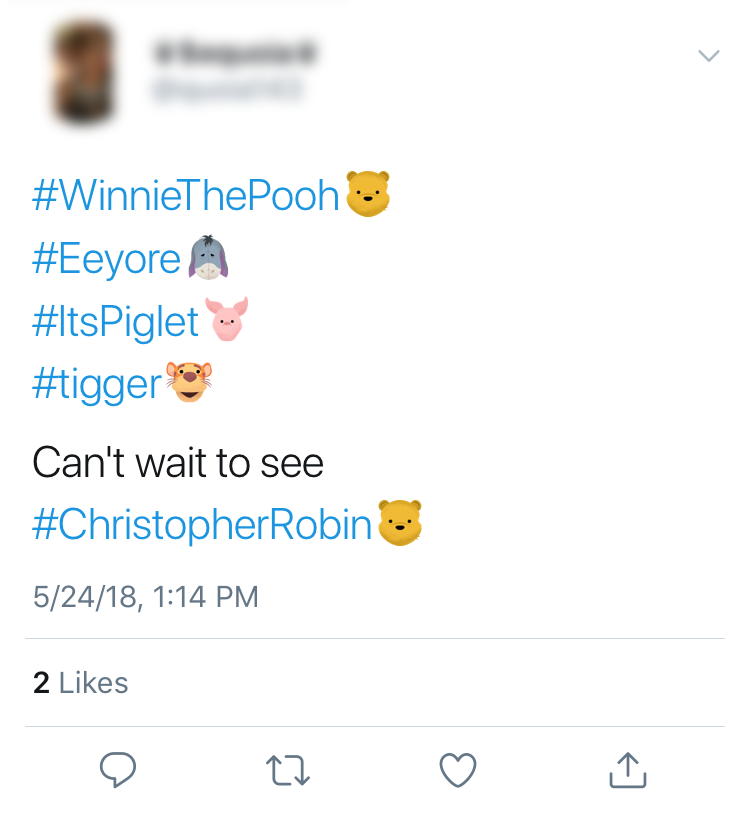
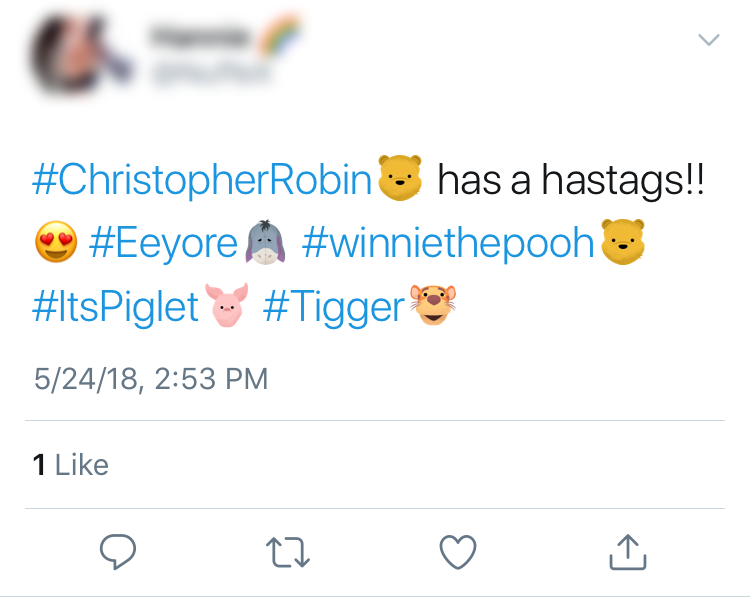
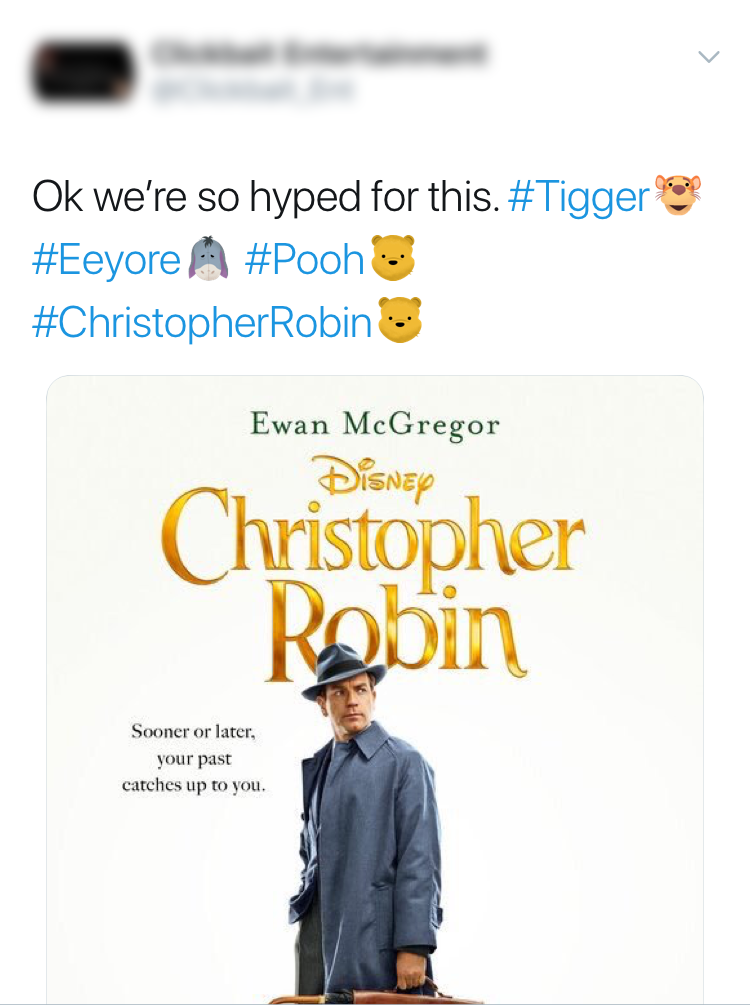 So for your brand’s next ad campaign, consider utilizing the power of Twitter emojis! And if you need someone to help you out, hit us up!
So for your brand’s next ad campaign, consider utilizing the power of Twitter emojis! And if you need someone to help you out, hit us up!
We Can GIF It
Be A Trendsetter, not a Follower
Keeping up with the trends in today's society is the priority for brands who adhere to the schema of remaining relevant. They need to understand what conversations their consumers are having, what’s important to them, and prove that they are also a part of this conversation.
What if I told you that’s the wrong approach to take?

Brands need to start the trend, not catch up to it. Trying to appeal to an audience using memes won't win you any brownie points with consumers—it’s too transparent for the hyper-jaded consumer of today and rings so hollow it may actually push your audience away. They are too aware of the 'corporate' image, and view the attempt like an adult trying, embarrassingly, to relate to youth using what they perceive as 'the new culture' but in inexperienced, and incorrect, ways.

For brands who want to proactively expand their audience, the solution is a little different: to insert themselves into their consumer’s popular culture and become the medium through which the conversation is had in the first place. And in 2018, the form of discourse is memes, and specifically memes through GIFs.

There is one clear champion of GIFs: you might have heard of them, but in case you haven’t it’s a huge meme depository called GIPHY. It’s a free, online platform that lets users upload their GIF content and access this content through a whole host of platforms including: Facebook Messenger, Instagram, (and most recently, Instagram DMs), Snapchat, Twitter, Viber, Slack, Discord, Outlook, and seriously, there’s MORE.
What does this mean? It means that putting your content on GIPHY makes your content as ubiquitous as GIFs have become across the internet. Given that, it’s amazing that it’s remained fairly underutilized by brands has a whole.
The Way Forward
Maintaining a GIPHY channel is great for brands who have high or low recognition alike. After creating the GIF content, they just need to be uploaded and tagged appropriately. From there, the tags will do all the work and users will find and spread the GIFs (literally) everywhere. It’s free marketing, but more than that, it’s the creation of a culture around the brand.
If brands are worried about maintaining the channel themselves, or are unsure about how to go about optimizing search results, fear not! There are companies who will help you create and manage your GIPHY channel (like us!) Although it will come at a price, the recognition that stands to be gained and the opportunity to insert your brand into the cultural lexicon is worth the hassle.
In fact, in this sense GIPHY can be even more advantageous to brands who aren’t well known. What better way to build your brand than by letting it expand organically through conversations that consumers are having? You can tailor the image you want by the content you upload and then wait to see how your consumers use the content you’ve created.
So while other brands struggle to remain a part of the conversation, those brands on the social beat will recognize the importance of being a part of the language spoken.

AR in Advertising: The New Era of Interaction
Connection to audience has always been fundamental in the creation of a brand message. The link between brands and their audience is what creates brand loyalty—people buy things that align with their personal values and that they feel an emotional attachment to. That’s what keeps them coming back. However, what that connection looks like has begun to shift. Augmented Reality (AR) is changing the way brands can interact with their fanbases in an unprecedented way, and many brand juggernauts have already embraced paving the way for the new era of interaction.
Amazon
Amazon is known for taking risks and trying almost anything in order to get results, but their foray into AR is a decidedly calculated risk. They recently acquired Body Labs, a company that uses cameras to scan their users and report weight, size, and height. The implications of this save Amazon a lot of headache: consumers will not worry about their clothes fitting if bought online (the largest detractor by far for why people don’t shop online), and Amazon won’t have to issue as many refunds or track as many returns. From a business perspective, they’re addressing and eliminating reasons that consumers don’t buy their products and creating a better experience for when they do buy it, since the clothes will fit versus a disappointing or even frustrating return. This positive experience becomes associated with Amazon and drives the consumer to go back.
Entertainment Industry
Snapchat needs no introduction: they are one of the leaders for AR filters, lenses and games. This technology is still evolving, and so is the community centered around creating for it. They have, on average, 70 million users using AR lenses for 3 minutes per day. This is the perfect platform for brands in the entertainment industry (TV shows, movies, and personalities) to promote themselves and their brand. However, recently Snapchat has been moving into a new arena—ecommerce for ANY brand, thanks to a new feature called now Shoppable AR. Shoppable AR allows companies to actually advertise through Snapchat by redirecting users to a website from a lens. This could be a product page for merchandise, a trailer for a movie—any link on the internet is fair game. Forerunners of taking advantage of this include King, who promoted their famous game Candy Crush through an install button right in their filter, STX Entertainment, who had a trailer for their upcoming movie “I Feel Pretty”, and Blizzard Entertainment, who utilized a filter to promote their new expansion pack, Battle for Azeroth.
Exponential Growth
AR isn’t just entering the ecommerce industry, it’s redefining it. It’s providing its consumers the ability to directly interact with their brand, to become a part of it. That kind of inclusivity encourages attachment, which encourages brand loyalty. The brands that have found the greatest success don’t just appeal to their consumers, they engage with them and become a part of them, like a member of their family. They make their consumers feel good; AR provides an unprecedented engagement level on that front.
The data speaks for itself: AR has exploded in growth over the last year, and it’s not looking like it’s going to stop anytime soon. Augmented Reality companies have grown 50% since the beginning of 2018 across 290 prominent companies, according to The Venture Reality Fund. AR and VR companies have raised over $1.8 billion in funding and are only continuing to expand. And although AR started out small, like the Facebook and Snapchat lenses we’re all familiar with, it’s beginning to branch out at a rapid pace, continuing to be developed and supported by goliaths and forerunners who see and fully comprehend its value, and who know making an investment now will yield profits later.
AR is still an understated marketing tool for now, but that will change sooner rather than later. Instead of being behind on the trend, brands should take full advantage of what AR can offer and showcase their product in a way that gets consumers excited about it—and thus, drives sales up, up, up.
Pushing your Headlines into the Spotlight
The Challenge
It’s every brand’s dream to stand out amongst the crowd, and every marketer’s goal to help their brand achieve that dream.
In today’s world of exponential technological breakthroughs, marketing strategy has by necessity been evolving to complement—the Internet is the newest frontier for marketers looking to expand their brand. However, changes in marketing aren’t always revolutionary; sometimes, even little changes have a large impact on a brand’s identity and tone, and thus, the relationship with their consumers.
Pop-up and targeted ads, a long stalwart of advertising and marketing, have become taboo so companies are now looking to the next best strategy. People don’t want to be sold things anymore; in the new, transparent age, they’re looking for genuine connection.
The Solution
What does it take to connect to an audience? The answer may be simpler than you think:
Emojis!!! 😁😂❤️🌮🔥👍🤠
Emojis are ubiquitous in today’s world; which means there’s one for any demographic you’re looking for. They come in different skin tones, in a huge amount of objects, places, and even in travel symbols and signs. They add personality to otherwise-bland text and catch the attention of the community your brand is trying to appeal to because they’re connecting to the image on some emotional level.

Which one of these catches your attention the most?
Emojis are also the perfect way to show HOW you are saying something; emojis can be used ironically and sarcastically, which in itself helps frame the brand’s relationship with their consumers: are they cool and edgy? Professional? Fun? There’s an emoji for that! There is no genre barrier: apps like CNNMoney have fully adopted emojis, with over 50% of their push notifications including at least one. In general, companies who’ve been early on the trend and incorporated emojis into their notification headlines have already received tangible, data-driven results. According to a study conducted by the entertainment platform LeanPlum, consumers open push notifications with emojis 264% more often than those without. Email subject lines that include emojis are opened 66% more, and applications that incorporate emojis receive a 26% lower uninstall rate.
Which one of these jumps out at you?
In short, emojis drive engagement. There is no aspect of a company’s goals that can’t be improved by adding a little emotion to help their consumers connect to them on an emotional level; whether the goal is to get hits on a webpage or sell a product, emojis can unify and enlarge your audience and their retention of your content.
The Takeaway
Emojis aren’t going anywhere; Twitter emoji campaigns, which allow brands to publish an image in tandem with their hashtag, have caught fire and are only picking up traction. Platforms like Slack allow users to upload their own, specific emojis so people can message in-jokes to each other. Emoji use and variance is evolving, and the farsighted brand will take measures to ensure that in a world where brands emote, they aren’t seen as ❄️☠️💤.
Give 'em the Ol' Razzle Dazzle: Digital Painting Applications in Messaging Stickers
Obi here!
As a digital illustrator at BTM my job requires me to cover everything from illustrating and creating images from scratch, to working on and building off of already existing assets.
Because of this, I have to be able to work in a variety of different styles, especially when it comes to working with already existing assets. An instance of this is BTM’s messaging stickers for Zagtoon’s Miraculous: Tales of Ladybug & Cat Noir.
To start this project BTM was supplied with a variety of assets, which included a mix of expertly rendered illustrations of Ladybug and Chat Noir, the two main characters from the show, and images of the 3D models used in the show. While the 3D models were fine, they were also distinctly different from the finished illustrations. When building a sticker pack keeping a consistent art style across the board is key. As the digital illustrator on the project it is my job to give em’ the ol’ razzle dazzle.

The first step in this process is addressing why some of the art looks different than others. The main difference is the hair, eyes, lighting and the places where the limbs got cut out of frame.

Next comes roughing out the general form over the 3d model, this includes adding parts that got cutout of frame and taking away the hard edges of the hair, so that it can be painted back to look less like a hard plastic model and more like actual hair.
After the general form has been established the forms and textures get refined and detailed. This stage includes painting her hair, eyes, touching up various parts of her face and further refining the areas of her figure were extended.
With some of the details, such as the mesh texturing on Ladybug’s body suit, it was faster to extract the pattern from other areas of her suit, build the flat texture in another document, and map it to the areas that required it.
With the form and details rendered, it’s time for lighting. With various blend modes and opacity layers I simulated more dynamic, colored lighting, which further pushed the contrast and helped to match the style of illustration used in the finished assets BTM received.
To finish the edits, a final rendering of any small details and a layer of low level noise to unify the piece are applied.
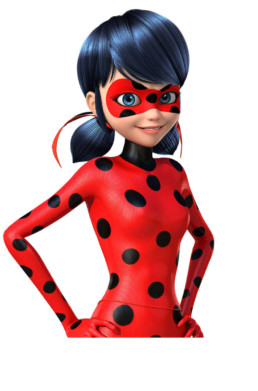
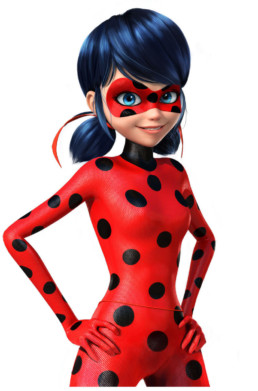

Voila! C’est Ladybug!
Building a Better Bee Beard
Building a Better Bee Beard
I’m Lahna 🤠
I’m primarily an AR lens programmer here at BTM, but I also help out with illustrations.
The decline in honey bee health is a very important issue all around the world. So for National Honey Bee Day we wanted to contribute our skills as a company to help the honey bee gain more attention.
The goal was to create Snapchat augmented reality lens that gave you a beard made of bees that flew off when you shook your head. This concept was an attempt to debunk the idea that a swarm of honey bees is a dangerous entity. Swarming honey bees are when they are most calm and passive since they have no home to defend. Which is why beekeepers have no fear when they show off a beard of bees! Also, it looks cool.
We thought of two ways we could go about it:
- Position so many bee objects around the face that it looks like they have conglomerated there into a natural beard shape
- Create a static, textured mass that resembled a beard and then cover it in actual moving bees to save on tri count.
We decided to start with plan A just so we could work on the head-shaking and bee navigation while our technical artist expertly modeled, rigged, and animated a bee for us to work with. We used spheres of the approximate size of what the bee object would be until she was finished.
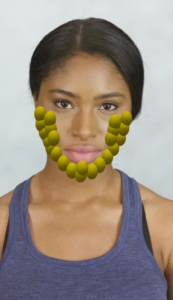
We whipped up a script to detect when a user was shaking their head and partnered it up with a system that monitored all bees and their states. This triggered random bees to fly off the face every time the user shook their head a certain number of times.
I was then sent the bee proxy to more properly craft the shape of the beard until the full textures and animations were complete. Substituting them back in took a long time because of a weakness of Snapchat’s AR engine that we didn’t understand — but would come to terms with later.
In order for the bees to appear more realistic when they are flying, we wanted to add a little flying loop as the come back to the face. So, we added a looping state in there as well.
Eventually, the animations were finished and it was time to replace all proxy bees with proper bee objects. This took an even longer time and we didn’t yet know why; each bee was just taking forever to select.
After trying to put a certain amount of bees on the face, the engine kept crashing. To the point where the project was un-openable.
We had well exceeded the suggested tri count for the engine, but it hadn’t stopped anything before. Other lenses were ten times over the allowed tris but worked fine.
We realized, however, the engine was worse when it came to an overload of the number of objects in the scene hierarchy. The engine could select an object on its own, but an object with dozens of children took a very long time to select…and because of the nature of the engine each imported bee was broken up joint by joint into their own objects.
So it was time for plan B. We made up a beard-shaped object but no matter how hard we tweaked it it just couldn’t look right because the surface needed to be covered in bees for it to be believable anyway. We remade the scene from scratch, using the old scripts. There were three kinds of bee objects:
- Static bees with very few tris, to make up the bulk of the beard
- Idly animating bees that never leave the face
- Bees with animations built in that let them take off, fly, and land
This set of solutions worked surprisingly well! And after that, we put an overlay filter and some sparkles on it and called it a day!
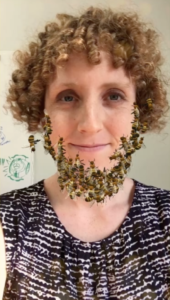
Check out the finished result for yourself: http://tinyurl.com/beardofbees
Decrypting the Emoji Code
In the modern mobile world, everyone knows what an emoji is. There’s a “standard set” of emojis we’re all familiar with that are available whether you’re using your iPhone, Android, or computer device, with new ones rolling in and even personalized-to-app emojis.
However, do you ever stop to think about how new emojis are added, or who even came up with the old canon? They’re just there; one day they weren’t, and the next day they were! Read onwards and have the mystery of the Emoji Code unraveled!
The Set Canon
Designer Shigetaka Kurita invented the emoji in 1999 to circumvent NTT DoCoMo’s message-character limit (at the time, 250, a la early Twitter). He drew inspiration from picture-based Chinese “Kanji” characters and, armed with a 12x12 grid, created the first set of emojis using common expressions and thoughts he felt were relatable and cute (and would save textual space!). This set was immediately introduced into most of Japan’s mobile products, but their competitors soon took artistic license and released emojis of their own; copying Kurita’s expressions but rendering them in a different style.
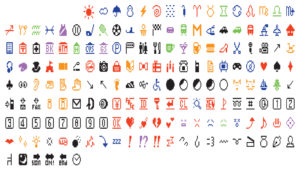
Shigetaka Kurita, NTT DOCOMO. Emoji (original set of 176). 1998–99. Software and digital image files.
Gift of NTT DOCOMO Inc., Japan
Initially, this caused quite a bit of chaos and miscommunication because a user of one company’s emoji could not see any other another company’s emoji. However, in 2005 carriers began to match incoming signals with their emoji sets and switch them over, and after Apple’s 2007 iPhone globalized them, the Unicode Standard was created so that your poop emoji will send to any device.
New Emojis
New emojis introduced into the existing canon are decided by the Unicode Consortium, which sounds like a bona-fide secret society right out of a sci-fi novel but is an actual, real-life organization whose goal it is to enable everyone to be able to use a computer and express themselves with pictures! However, the individual designs for the emojis are left at the discretion of the companies making them; the biggest players being Apple, Microsoft, Samsung, and Google. As a result of this, each of these big-name platforms (and other smaller-name ones) has their own emoji for the same expression.
The Gun Emoji
Take for example, the gun emoji, which was one of the most controversial emojis out there at the time of its creation and is still interesting today because of the fluctuating gun climate in the USA. Upon its inception, none of the platforms had the same one, and some even went as far as to use squirt guns instead of actual guns. There were also companies that started with real guns but changed them to squirt guns at a later date (and in Microsoft’s case, vice-versa). See the chart below:
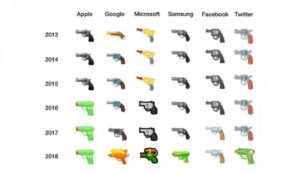
Source: Emojipedia / Emojipedia
Obviously, squirt gun to lethal gun emojis can totally change the tone of a message and actually cause confusion if two users were receiving different images.
It’s worth noting that Apple was the forerunner in changing their gun emoji to the squirt gun we see now. After Apple changed theirs, most companies followed suit partly due to personal value but also because they are trying to create an emoji culture where there is as little confusion as possible, a mission that as designers ourselves we can absolutely appreciate.
Facebook has also announced that they will be removing their gun emoji and replacing it with a squirt gun, although that change hasn’t happened yet. This means every major platform has changed from a real gun to a squirt gun.
Sources:
https://www.webdesignerdepot.com/2016/10/the-surprising-history-of-emojis/
